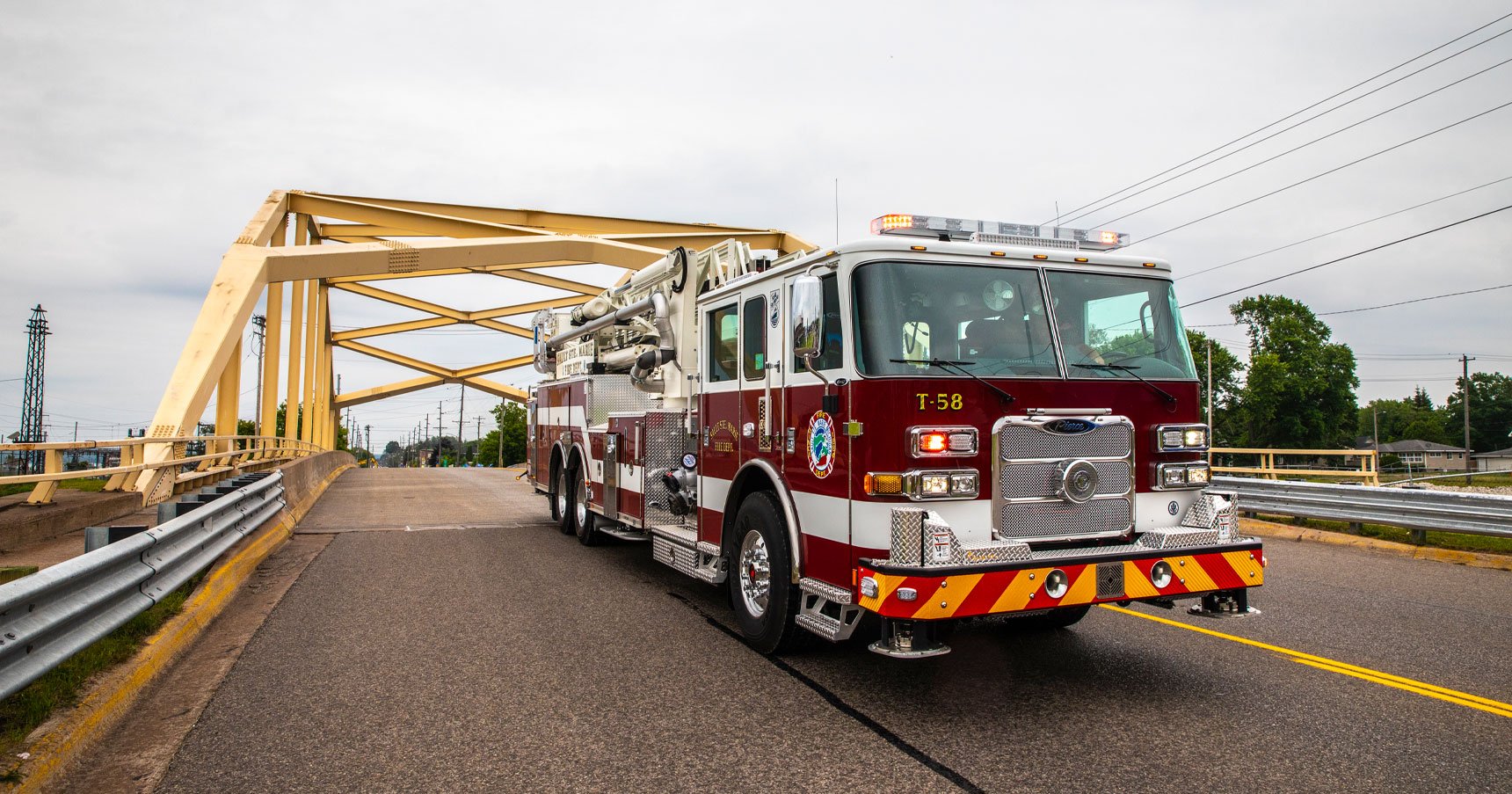
Searching for the right aerial fire truck for an urban environment?
To support the needs of an urban community, and if applicable, mutual aid in a neighboring city, fire department purchasing representatives have many apparatus options to consider. This blog outlines a detailed discovery process to use as you begin your search, including:
- Understanding the challenges of urban firefighting
- Establishing fire truck buying criteria
- Completing a city assessment and infrastructure review
- Determining ground ladder needs
- Completing a fire station evaluation
What Are the Challenges of Urban Firefighting?
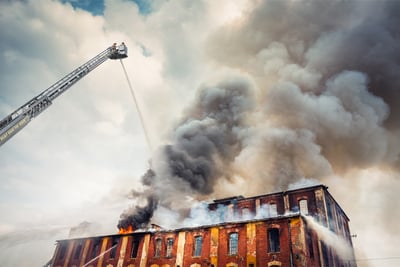 Every community has a unique set of firefighting challenges to manage, and urban fire departments often face some similar circumstances, including:
Every community has a unique set of firefighting challenges to manage, and urban fire departments often face some similar circumstances, including:
- The prevalence of high-rise and multioccupancy buildings means firefighters must have the right types of trucks and equipment on board to manage these unique fire scenarios. Although high-rise fires are infrequent, they are labor-intensive events that require special tactics, tools and knowledge.
- High population density with a mix of residential and commercial properties in the same areas present significant logistical, management and safety threats.
- The size and complexity of interior spaces in urban environments is quite different from other types of communities and can present significant firefighting challenges.
- The enclosed nature of the hazard area is more prevalent in urban environments where there is often limited and sometimes difficult access to the fire area.
Learn more about small and urban fire departments and see truck examples from each in this blog.
Establish Your Fire Truck Buying Criteria
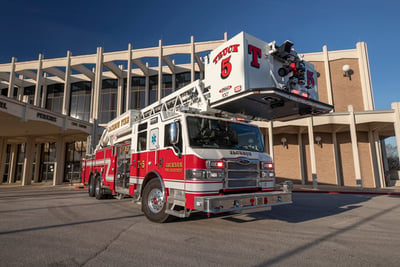 Setting out to purchase a new fire apparatus is certainly no easy feat. From understanding the fire truck buying process to investigating consortiums and other funding opportunities, fire department representatives must navigate through many complex steps.
Setting out to purchase a new fire apparatus is certainly no easy feat. From understanding the fire truck buying process to investigating consortiums and other funding opportunities, fire department representatives must navigate through many complex steps.
Establishing the fire truck buying criteria is a critical step that should come early in the purchasing process. This starts by understanding the mission of the truck:
- What types of calls will the first-out truck respond to?
- What type(s) of equipment is needed on the truck?
- Why additional support may be required (Example: running the foam system)
Once the mission of the truck is understood, identifying the type of truck to support the critical needs is required. Is a tiller required to navigate tighter streets, cul du sacs and traffic congestion? Would a smaller aerial fire truck suffice? Would a quint satisfy all requirements?
Complete a City Assessment and Infrastructure Review
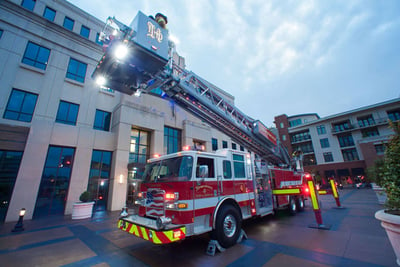 In addition to understanding the types of calls a new fire truck may service, it’s also important to consider the geographic and infrastructure make-up of the service area. Completing a city assessment and infrastructure review is a great place to start.
In addition to understanding the types of calls a new fire truck may service, it’s also important to consider the geographic and infrastructure make-up of the service area. Completing a city assessment and infrastructure review is a great place to start.
Take the time to drive around your community with a little bit of a different perspective—evaluate the overall geographic terrain and look for height restrictions, including overpasses, railroad bridges, power lines, overhead obstructions and large trees.
As you survey the fire truck service area, be sure to evaluate the existing infrastructure and buildings in detail.
Infrastructure Considerations
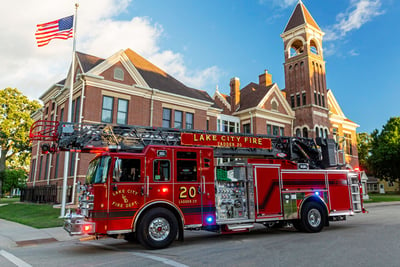 Take time to review the infrastructure in your fire department service area to get a sense of the required truck capabilities and avoid any surprises in the buying process. Here are a few things to look for:
Take time to review the infrastructure in your fire department service area to get a sense of the required truck capabilities and avoid any surprises in the buying process. Here are a few things to look for:
- Street configurations. Review the street configurations in the service area to help determine if a new apparatus needs a shorter wheelbase, rear mechanical steering, shorter rear overhang or a tighter turning radius.
- Height restrictions. Be sure to review height limits on overpasses, railroad bridges, power lines and other overhead obstructions.
- Greenery and foliage. If the service area has a large tree canopy, an aerial with a platform may not be the best choice. Review the greenery and foliage around the service area to ensure the aerial device can reach where it needs to go.
- Street set up areas. Outrigger configuration and spread are important considerations when you purchase an aerial device. An aerial with a short jack feature or a narrower outrigger spread may be necessary to set up in narrow streets and alleys.
- Traffic patterns. Understanding how traffic flows through the service area can help determine the truck type and size required to meet the community’s needs.
- Slope and grade. Understanding the slope and grade of the local roadways will ensure the apparatus you are selecting can be set up in the necessary locations. It’s also important to consider any rivers, bridges, overpasses, cliffs or drainways that may require below-grade operations.
- Ground ladders and uneven terrain. In some instances, uneven terrain can make it difficult to use ground ladders and an aerial device may be a safer choice. Survey your community to determine any uneven areas that would make ground ladders difficult to use.
- Horizontal reach. Horizontal reach capabilities are critical when a set back is large. Understand the building set back in your service area to help determine the right apparatus choice.
- Vertical reach. Choosing an aerial device requires an understanding of vertical height requirements to improve effectiveness in ventilating and rescue operations.
Building Considerations
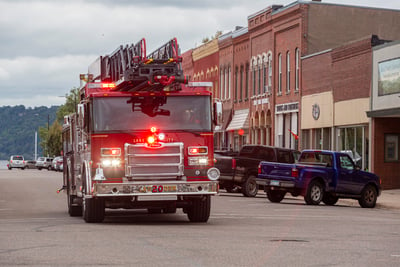 Urban environments can look very different from city to city and even within the same jurisdiction. Understanding the building considerations in a fire truck’s immediate service area, or mutual aid service area can dictate the ideal type of truck and configuration. Below, we outline several building considerations worth evaluating before you finalize your fire truck design.
Urban environments can look very different from city to city and even within the same jurisdiction. Understanding the building considerations in a fire truck’s immediate service area, or mutual aid service area can dictate the ideal type of truck and configuration. Below, we outline several building considerations worth evaluating before you finalize your fire truck design.
Residential Districts
- Accessibility. The type of building and the level of occupancy may dictate whether to choose a ladder or platform truck. A platform can offer higher water flow capabilities for faster knockdown and to quickly get a firefighter on the roofline for ventilation. It can also perform rescue operations more safely.
- Age of buildings. Older homes and buildings are typically constructed of heavier structural members that provide longer burn times before collapse. Newer construction materials burn faster and may place firefighters at greater risk during interior attack operations, justifying the capability of an aerial device to provide fire suppression from an elevated master stream.
- Types of architecture. Certain types of residential architecture present a much greater challenge for ground ladder accessibility. Steep roofs, metal roofs and multiple roof lines are examples of an aerial device providing much safer access for firefighters during rescue and ventilation operations.
Commercial Districts
- High occupancy buildings. If your community has densely populated multi-story buildings, you will need an aerial device with higher tip loads to help evacuate many people.
- Retirement facilities and hospitals. Hospitals and facilities serving senior citizens contain people with special requirements that may preclude ground ladder rescue. An aerial platform is an ideal tool in these situations to provide safe and secure rescue operations.
Industrial Districts
- Chemical plants or refineries. Some departments require large water flows because of the potential for large-scale chemical or refinery fires. Aerial units designed with larger diameter waterways and increased flows are required. The aerial device will be designed to accommodate the increased water and nozzle reaction forces.
- Industrial manufacturing. From paper mills to food production, fire suppression in manufacturing facilities requires high water flow capabilities.
Don’t Forget Ground Ladder Considerations
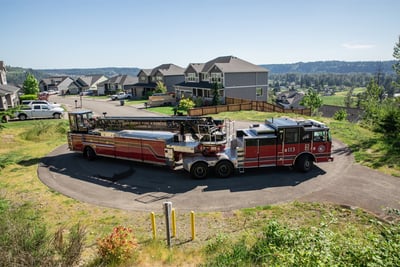 Whether a fire department is considering a quint or non-quint aerial device, additional consideration needs to be given to ground ladder requirements.
Whether a fire department is considering a quint or non-quint aerial device, additional consideration needs to be given to ground ladder requirements.
NFPA 1900 requires a minimum of 115’ feet of ground ladders on an aerial fire apparatus.
If a new apparatus is a quint, NFPA requires a minimum of 85’ feet of ground ladders. Due to housing and building construction, some departments may have special ladder requirements or specify an ISO ground ladder complement. Be sure to discuss ground ladder special requirements with your fire truck manufacturer.
Complete a Fire Station Evaluation
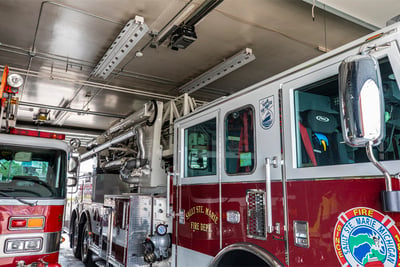 Don’t forget about the importance of evaluating your fire station! You need to make sure that any new fire apparatus will fit within the restrictions of your firehouse.
Don’t forget about the importance of evaluating your fire station! You need to make sure that any new fire apparatus will fit within the restrictions of your firehouse.
Here is a quick checklist of items to review:
- The height of the overhead bay door may dictate the height requirements of a new apparatus. If a department is located in a cold-weather climate, keep in mind that ice and snow on the apron may reduce the station door clearance. Consider the angle of approach and departure in your truck design. The angle and length of aprons will impact the overall height when entering and exiting the firehouse door opening as well as other low hanging obstructions within the firehouse.
- The turning radius and tail swing required to get the unit in and out of the station needs to be verified. Narrow streets, sidewalks and other obstacles can make it difficult to get in and out of the station.
- The overall length of the station bay can limit the length of a fire truck.
- The fire station floor structure needs to be strong enough to handle the weight of the fire truck you select. Be sure to evaluate the weight limitations in the building code.
Learn More About Urban Firefighting Aerial Fire Truck Advancements
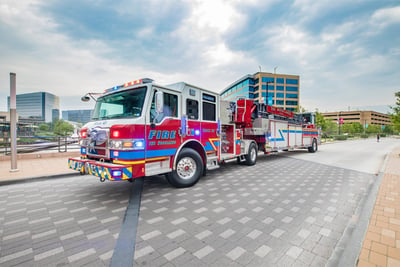 Pierce Manufacturing is dedicated to providing educational information to fire departments and committee representatives throughout the fire truck buying lifecycle.
Pierce Manufacturing is dedicated to providing educational information to fire departments and committee representatives throughout the fire truck buying lifecycle.
If your fire department is interested in learning more about types of aerial devices, take a look at these additional resources:
- 7 Tips to Maximize Aerial Fire Truck Storage
- Ladder Fire Truck vs Platform Fire Truck
- A Complete Guide to Tractor Drawn Aerial Fire Trucks
- 3 Types of Aerial Devices: A Comprehensive Overview
- 4 Benefits of H-Style Aerial Stabilizers
- Which Pierce Ascendant Aerial Is Best for Your Fire Department?
- Aerial Placement and Operation: 6 Benefits of Pierce Ascendant Aerials
- What is a Quint Fire Truck?